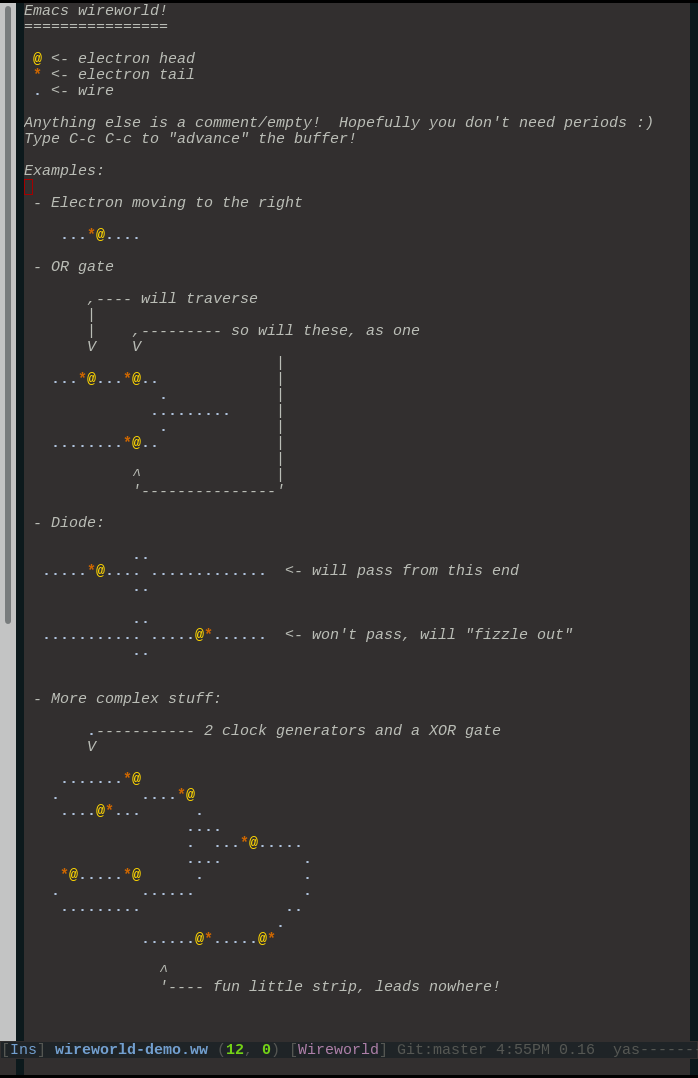Wireworld in Emacs
It is a truth universally acknowledged, that a hacker under the pressure of a deadline must be in want of a distraction. So it has been with me; I've a TODO list a mountain high, and I've been especially cracking under the stress of trying to get things moving along with ActivityPub. I have a test suite to write, and it's turned out to be very hard, and this after several other deadlines in a row. I've also meant to blog about several things; say the talks I gave at FOSDEM or at ChicagoLUG. I've got a leak in my inbox that's been running for so long that the basement of my email has developed an undertow. So today, instead of getting what I knew I should be doing done, I instead went off and did something much more interesting, which is to say, I implemented Wireworld in emacs.

What is Wireworld? It's a cellular automaton, not unlike Conway's Game of Life. Except with Wireworld, the "cells" in play are a bit more constrained... you have a set of wires, and electrons run along them, multiply, and die out, but the paths stay the same. The rules are very simple to implement (Wikipedia says all there is to know). But you can build incredible things with it... even a fully working computer!
Anyway, like many hacks, this one appeared out of boredom/distraction. I had long wanted to play with Wireworld, and I was reminded of it by seeing this cool hack with a digital clock implemented in Conway's Game of Life. It reminded me just how much I wanted to try implementing that computer, or even much simpler circuitry, but I had never been able to get started, because I couldn't find a working implementation that was easy for me to package. (I started packaging Golly for Guix but got stuck for reasons I can't remember.) I started thinking about how much I liked typing out ASCII art in Emacs, and how cool would it be to just "draw out" circuits in a buffer? I started experimenting... and within two hours, I had a working implementation! Two more hours later, I had a major mode with syntax highlighting and a handy C-c C-c keybinding for "advancing" the buffer. Live hacking in Emacs is amazing!
More could be done. It would be nice to have a shortcut, say C-c C-s, that starts up a simulation in a new buffer and runs through the simulation automatically without clobbering your main buffer. (It could work the way M-x life does.) Anyway, the code is here should you want to play around.
Happy (circuit) hacking!



